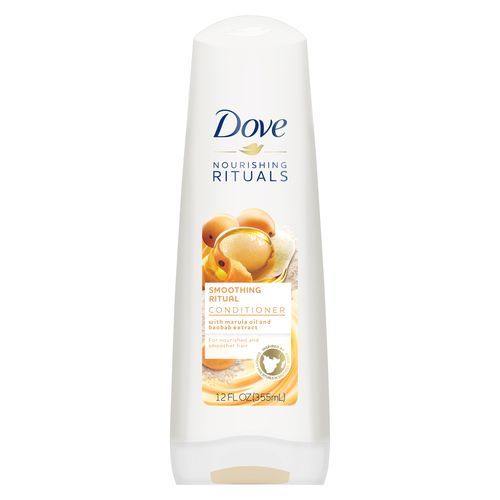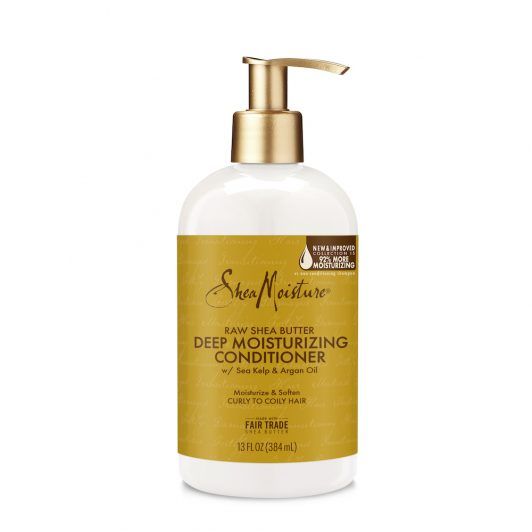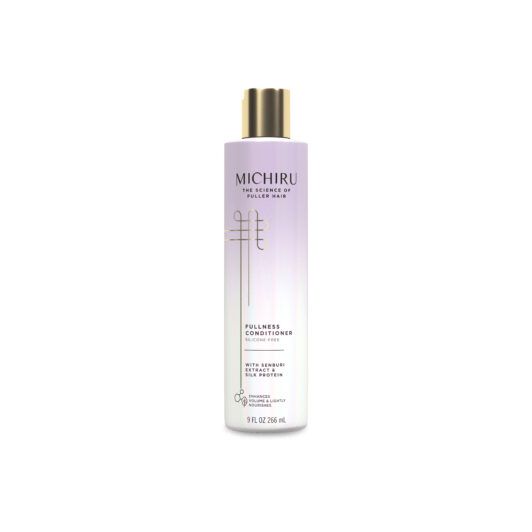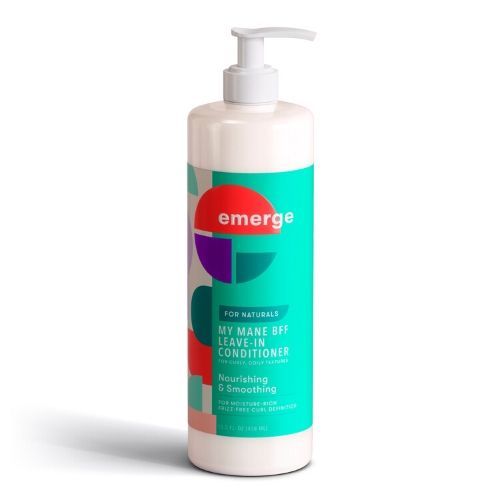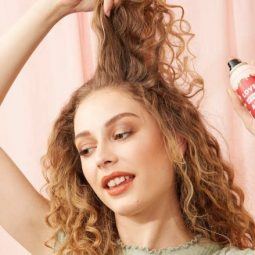
A Step-by-Step Guide on How to Properly Condition Hair
Get well-acquainted with this wash-day essential.
These days, with our schedules being so jampacked, we’re often forced to take a more streamlined approach to hair care. Because of this, a lot of us have taken to only using those products which are absolutely essential (i.e. shampoo/dry shampoo to combat obvious issues, like greasiness), with hair conditioning often falling to the wayside. But this product is essential to all hair types! Find out how to use hair conditioner for maximum hair benefits below, and check out some of our top conditioner recommendations:
Hair Conditioning: How to Use Conditioner on Hair Effectively
A step-by-step guide on how to use conditioner effectively:
Step 1: Wet your hair.
Start by wetting your hair and washing your hair with your favorite shampoo. Make sure to thoroughly rinse the shampoo from your hair to prepare your strands for conditioning. Do not apply your conditioner on completely wet hair, ideally, it should be just slightly damp, so your hair cuticles can absorb a product.
Step 2: Apply conditioner.
Dispense a quarter-sized amount of conditioner into your palm. You can use more product for longer hair and less for shorter hair. Use your fingers to comb the conditioner through the ends of your hair and focus on the sections of hair that hit below your ears. Avoid applying conditioner to your hair roots, unless it’s a conditioner for scalp.
Step 3: Carefully comb the conditioner through your hair.
Use a wide-toothed comb to carefully comb the conditioner through your ends and let the conditioner sit for a few minutes. You can slightly twist your strands with a conditioner on them to help a product spread more evenly.
Step 4: Rinse!
Finish by thoroughly rinsing the conditioner from your hair and styling as usual.

Find the Best Conditioner for You
Keep reading to find the best conditioner for you:
1. For All Hair Types
These are the basic conditioners you’ll probably be most familiar with. Light enough to be used regularly (every day if needed), they help to protect the hair between washes and can be washed off straight away.
Dove Smoothing Ritual Conditioner is a great example of a good everyday conditioner, as it contains a pro-moisture complex to smooth the outside of the hair’s surface and leave it feeling touchably soft.
2. For Curly, Dry and Damaged Hair
Pick a more intensive version of your everyday conditioner to give natural curly, dry, or damaged hair an extra boost of TLC. We suggest you trying Sheamoisture Raw Shea Butter Deep Moisturizing Conditioner to moisturize and soften dry hair.
This conditioner with raw shea butter and argan oil leaves your hair feeling especially soft and luscious. So close your eyes and you’ll soon be transported to the salon!
3. For Colored Hair
If you dye your hair, it’s strongly recommended to pick conditioners, specifically formulated to keep your hair color bright, and your tresses shiny and strong.
Suave Vivid Color Conditioner helps to protect your new hair color and keep it vibrant for up to 40 washes. Its formula with Amino Acid Complex is strengthening your tresses after hair dye.

4. For Thinning Hair
For thin hair, you need a conditioner that doesn’t weigh down your tresses, but makes them looking thicker and fuller by coating each strand, protecting from breakage and adding shine.
MICHIRU Fullness Conditioner with silk protein is lightweighted, add adds volume by visibly thickening each of your hair strands. The result is fully-looking, shiny and elastic, healthy hair.
5. For Frizzy Hair
Leave-in conditioners can be either light spray or rich lotion formats and, as the name suggests, they don’t need to be rinsed off after application, making them perfect for a post-shower boost of moisture or for on-the-go hydration.
Emerge My Mane BFF Leave-In Conditioner is made with pequi oil and fair-trade shea butter and it provides rich moisture and slip.
How to Use Leave-In Conditioner
- Apply your leave-in conditioner on freshly washed and rinsed strands.
- Focus on your mid-length and hair tips, avoid application to the roots.
- Spread your conditioner evenly through your tresses, you may use a wide tooth brush, or your fingers.
- Style your hair as usual. You don’t need to wash off this product, and, as a bonus, leave-in conditioners sometimes provide heat protection.
- For extra hydration, you can apply leave-in conditioner to dry hair, too.
How to Use Deep Conditioner
If you’re wondering how to use conditioner as a hair mask, or deeply condition your hair, here is the step by step instruction:
- You can use a special deep conditioner, or your regular conditioner.
- Wash your hair with a gentle shampoo and rinse.
- Apply a generous amount of conditioner to your mid-length and hair tips.
- It’s usually recommended to leave a deep conditioner treatment on your hair for 20-30 minutes, but there’s also an option to keep it for a few hours, or even overnight, if your hair is damaged.
- Cover your hair with a plastic cap, and if you wish, you can add heat with a blow dryer, or by applying deep conditioner in a hot shower.
- Rinse your hair with cool water, dry and style as usual.
How to Use Conditioner and Shampoo 2-in-1
2 in 1 shampoo and conditioner product is fast and convenient in usage, but most trichologists do not recommend using it consistently. It’s much better to apply your shampoo and conditioner separately, and have 2 in 1 products for ’emergency’ cases — when you’re in a hurry, so don’t have time for a full hair care routine, travelling, or washing your hair at the gym. However, it’s very easy to use a 2 in 1 conditioner and shampoo product:
- Wet your hair.
- Apply your 2 in 1 product to your palms first, and rub. You can take the same amount as needed to wash your hair with a regular shampoo.
- Then apply to your whole hair length from roots to tips.
- Gently massage and rinse.
- Repeat, if needed, then dry and style your hair as usual.
How to Use Conditioner Bar
Sometimes, a conditioner can be made in a form of a bar. In opposite to liquid conditioners, it needs less packaging, but slightly more difficult in use.
- Wash and rinse your hair as usual.
- Wet your conditioner bar and rub it in your palms, like a soap.
- Thoroughly apply to your hair mids and tips.
- Leave for a few minutes, then rinse, dry and style your hair.
How to Use Conditioner for Men

Men are more likely to skip such an important hair care step as a conditioner application, but that doesn’t mean they don’t need it. The only exception is for men with very short haircuts and shaved hair, because if hair is very close to the root, it takes all required nutrients and protective oils directly from the follicle. How to use conditioner for male with medium to long hair?
- Wash and rinse your hair.
- Pick shampoo and conditioner specifically formulated for men, because men’s scalp and hair have different pH level and needs, compared to women’s products.
- Apply your conditioner, avoiding your scalp and hair roots.
- Rinse, dry, and style your hair as usual.
How to use conditioner on beard, and can men use a regular hair conditioner for a beard? Despite the fact, that hair conditioner can soften and smooth your beard, the answer is actually no. For face hair, it’s better to use specifically formulated beard products, and today we have a large selection of them.
What Is the Difference Between Conditioner and Hair Mask
They all are moisturizing and nourishing products, but actually there is a difference:
- Mask penetrates your hair deeply, and conditioner works on the cuticle level to smooth and add shine.
- Hair mask has mostly nourishing properties, but conditioner is covering and protecting your hair. So, if you use a hair mask, it’s usually recommended to do it after a hair wash, then proceed with a conditioner. These products can’t replace each other.
- Unless you’re deep conditioning your hair, a regular conditioner is enough to stay on your hair for 1-2 minutes. A mask needs to sit on your hair for at least 15 minutes to deeply nourish and moisturize.
Do I Need a Conditioner for Greasy Hair
All types of hair need conditioning after washing, and greasy hair, too. By applying a conditioner to your mid-length and hair tips you can restore the lipid balance, and won’t face such an issue as greasy roots and dry tips, which is common, especially for long hair.
What Are the Side Effects of Conditioner
Sometimes, silicons in conditioner can provoke breakage on face or back acne prone skin. In this case, make sure to avoid contact of a conditioner with your face and back. Washing your hair separately upside down can solve the issue completely.
How to Make a Natural Conditioner
For a conditioning effect, you can apply coconut, argan, jojoba oil to your mid-length and hair tips. Also, you can rinse your hair after washing with rice water, water with a few drops of apple cider vinegar, or lemon juice (but keep in mind its slight bleaching properties!). And before trying any homemade cosmetic recipes, first do a patch test, and consult with a trichologist.
How to Wash Your Hair with Conditioner
This method is called co-washing, and usually preferred by ones with natural, curly, or dry hair. It helps to keep your hair and scalp moisturized, and also has styling benefits, such as defining your natural curl structure, adding shine and smoothness to your locks.
- On your hair wash day, apply your conditioner like a shampoo to all your hair length.
- You may use a special co-washing conditioner, or your regular one. Gently massage.
- If you noticed excess of product and buildup on your hair and scalp, you can rotate co-washing method with using a clarifying shampoo once in a few weeks.
- Rinse, dry and style your hair. If you like co-washing, you can stick to the whole curly girl method, which includes careful drying hair, applying leave-in products, styling and embracing your natural hair texture.
Are you looking for more hair care tips? Be sure to follow us over @AllThingsHairUS!
